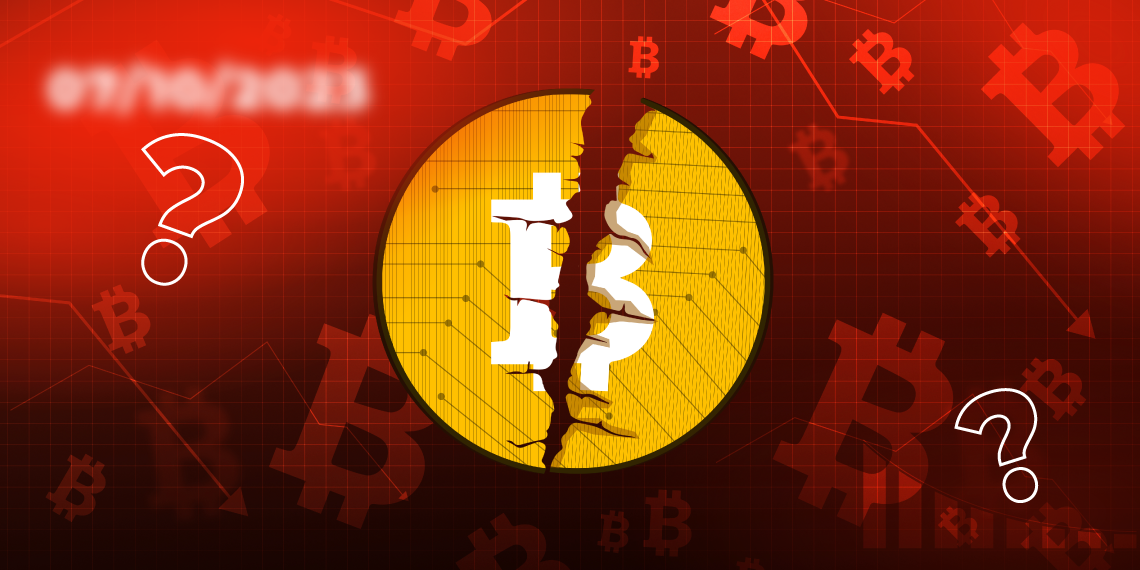The Bitcoin halving is one of the most important events on BTC’s blockchain. It causes inflation in the value of bitcoin by reducing the quantity of bitcoin in circulation while also increasing demand for Bitcoin. The consequences of a Bitcoin halving affect everyone involved with Bitcoin’s ecosystem.
The Bitcoin block reward is cut in half every four years after every 210,000 blocks have been mined. This is referred to as a halving since it cuts the rate at which new bitcoins are created into circulation. This is Bitcoin’s method of forcing artificial price inflation until all Bitcoins are in circulation.
The block reward will continue for a further century (until around 2140) when the intended cap of 21 million is reached. Miners will be rewarded with fees at that time, which users will pay, for processing transactions. These fees guarantee that miners have an incentive to mine and keep the network operating.
Bitcoin halving next cycle is expected in 2 years
The bitcoin halving occurs every four years, and it is significant since it indicates the rate of new bitcoins being generated approaching its limit: the total maximum supply of Bitcoins is 21 million. There are currently about 18.85 million Bitcoins in circulation, with just around 2.15 million remaining to be mined through rewards over the next four years.
In the past, Bitcoin halving corresponded with large price fluctuations. The first halving, which took place on 28 November 2012, resulted in a rise from $12 to $1,217 on 28 November 2013. On 9 July 2016, the Bitcoin network executed its second halving event. The price at that time was $647, and by 17 December 2017, the bitcoin value had increased to $19,800. The price subsequently fell over the course of a year from this high of $3,276 on 17 December 2018, when it was 506 percent more expensive than its pre-halving rate.
The most recent Bitcoin halving took place on 11 May 2020. At that time, a bitcoin was worth $8,787. On 14 April 2021, the price of a Bitcoin rose to $64,507 (a 634 percent increase from its pre-halving value). A month later, on 11 May 2021, a bitcoin was valued at $54,276, which represented a 517% increase that is more compatible with the halving of 2016.
The coming Bitcoin halving event is generating a lot of debate among the financial community. Those who are talking about it are pleased to note that the cryptocurrency world has just over two years before the halving, leaving many outsiders wondering what it is and why it’s so important.
The next Bitcoin halving event is expected to occur on or around 4 May 2024, when Bitcoin has 840,000 blocks. The majority of investors think that the value of Bitcoin will rise over time, and it may grow faster between now and its fourth halving in 2024. This is based on its track record throughout history and the outcomes from the first and second halving events. There have previously been considerable jumps in the price of Bitcoin at both times before now.
The effects of Bitcoin halving on the crypto ecosystem
The next bitcoin halving is expected to occur in the first quarter of 2024, and the miner’s reward will be reduced to 3.125 BTC. Bitcoin investors or traders should keep in mind that a halving is typically accompanied by significant volatility and upheaval for bitcoin.
After the 19 millionth Bitcoin block, ‘730002,’ was mined on 1 April, it became clear that just 2 million BTC are still left out of the 21 million Bitcoin ceiling. Reduced supply generally results in a rise in demand, which implies that prices could go up.
The past Bitcoin halving events have been associated with gradual and significant price appreciation over time, culminating in one and a half years. If the same happens with the next one, Bitcoin investors will be happy. Miners will have no incentive if a bitcoin halving does not increase demand and price. The reward for completing transactions would be lower, and Bitcoin’s value would not be high enough.
To avoid this, Bitcoin has a mechanism to adjust the difficulty of earning mining rewards, also known as the mining difficulty. If the reward was cut in half and the price of Bitcoin remained constant, miners would be incentivized by lowering the difficulty of mining. This implies that while the quantity of bitcoins rewarded has decreased, the difficulty of processing a transaction has been reduced.
This strategy has already been implemented twice. So far, the consequences of these bitcoin halvings have been a price rise followed by a precipitous fall. However, the declines that have subsequently occurred have yet to bring prices back to their previous levels.
Take, for example, the 2017 to 2018 bubble, when the value of a bitcoin rose to around $20,000 and then fell to around $3,200. This is a significant downturn, but before the bitcoin halving, bitcoins traded at around $650.4.
Despite the fact that this method has thus far proven effective, the halving is almost always followed by tremendous speculation, hype, and volatility, with how investors will respond to these occurrences in the future unpredictable.
The third halving occurred not only during a worldwide pandemic but also in the midst of increased regulatory speculation, greater institutional interest in digital assets, and celebrity buzz. Given these extra variables, it’s difficult to forecast where Bitcoin’s price will ultimately settle.
By around 2140, the last of the 21 million Bitcoins that will ever be produced will have been mined. At this time, because there will be no more new bitcoins to discover, the halving schedule will come to an end.
On the other hand, miners will be rewarded for continuing to validate and confirm new transactions because transaction fees paid to miners are anticipated to increase in the future, owing to a greater volume of transactions that include fees and a higher nominal market value for bitcoins.





